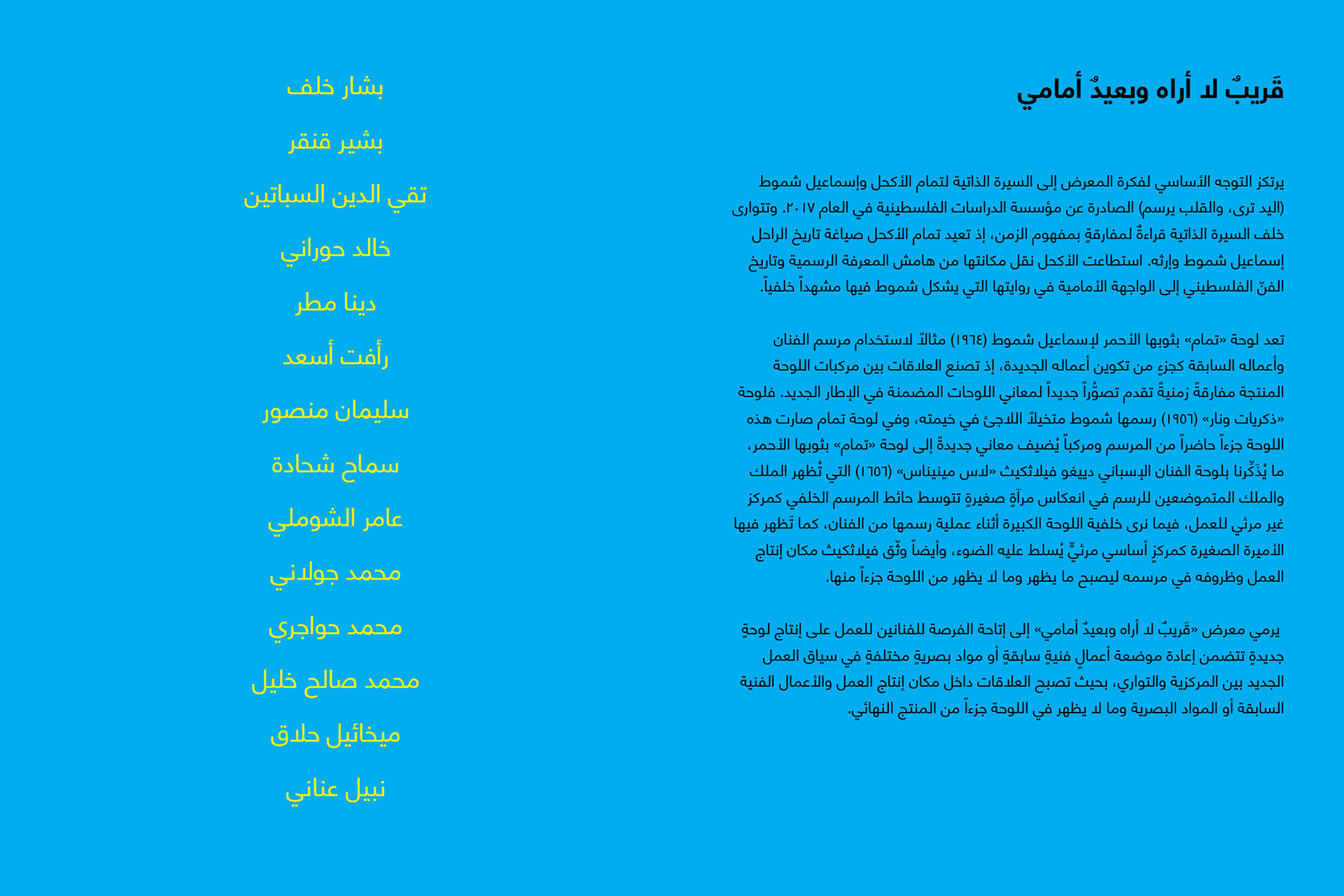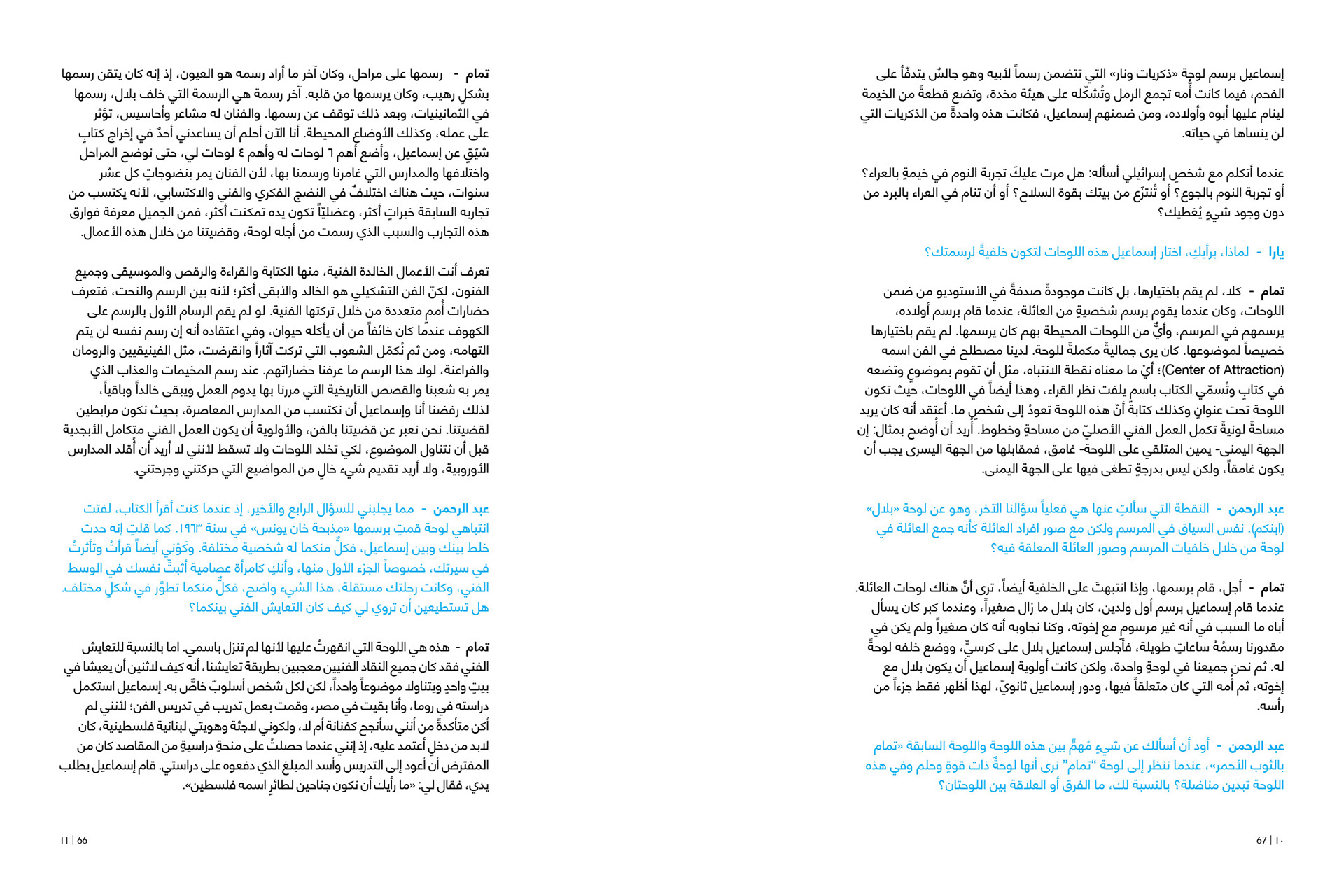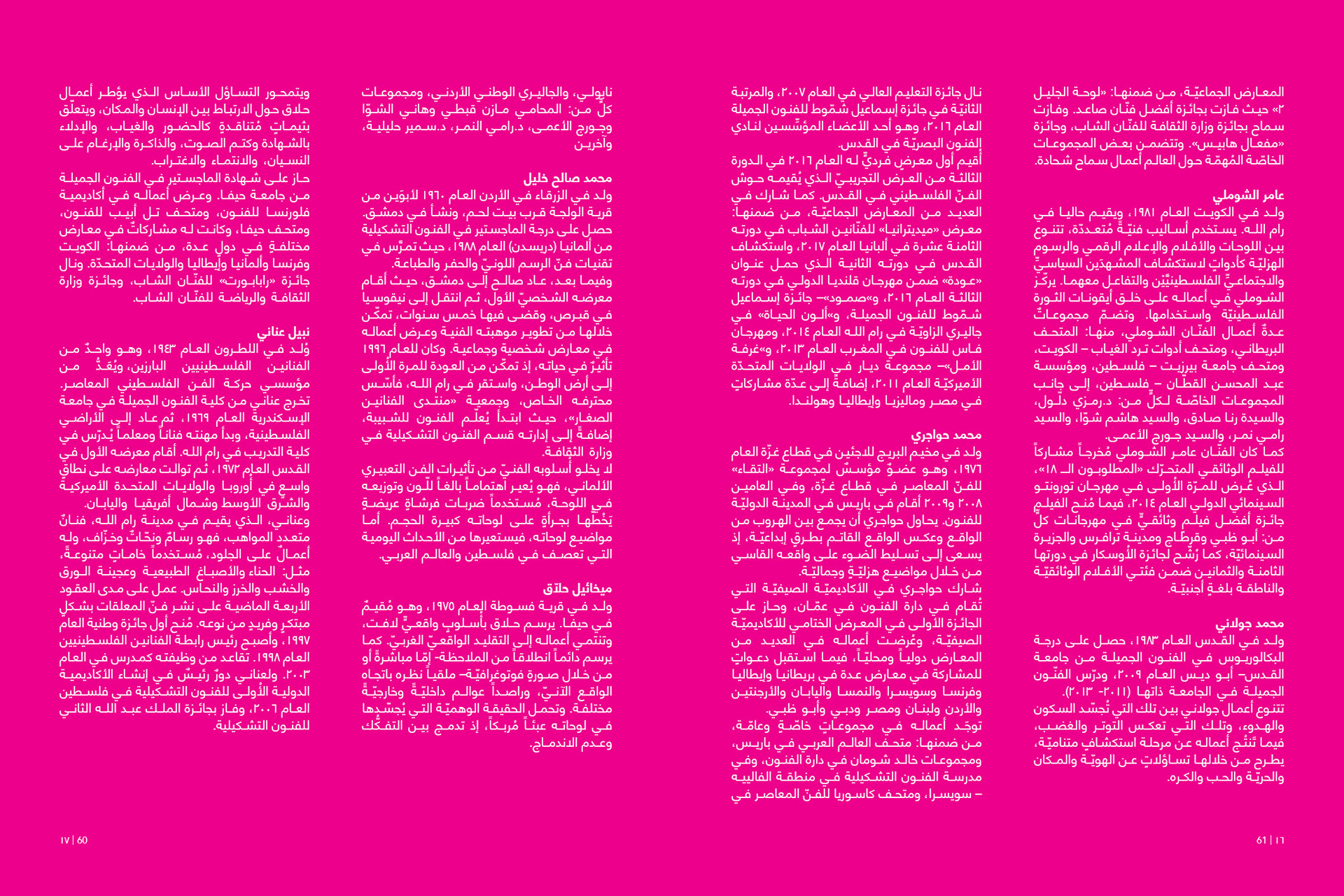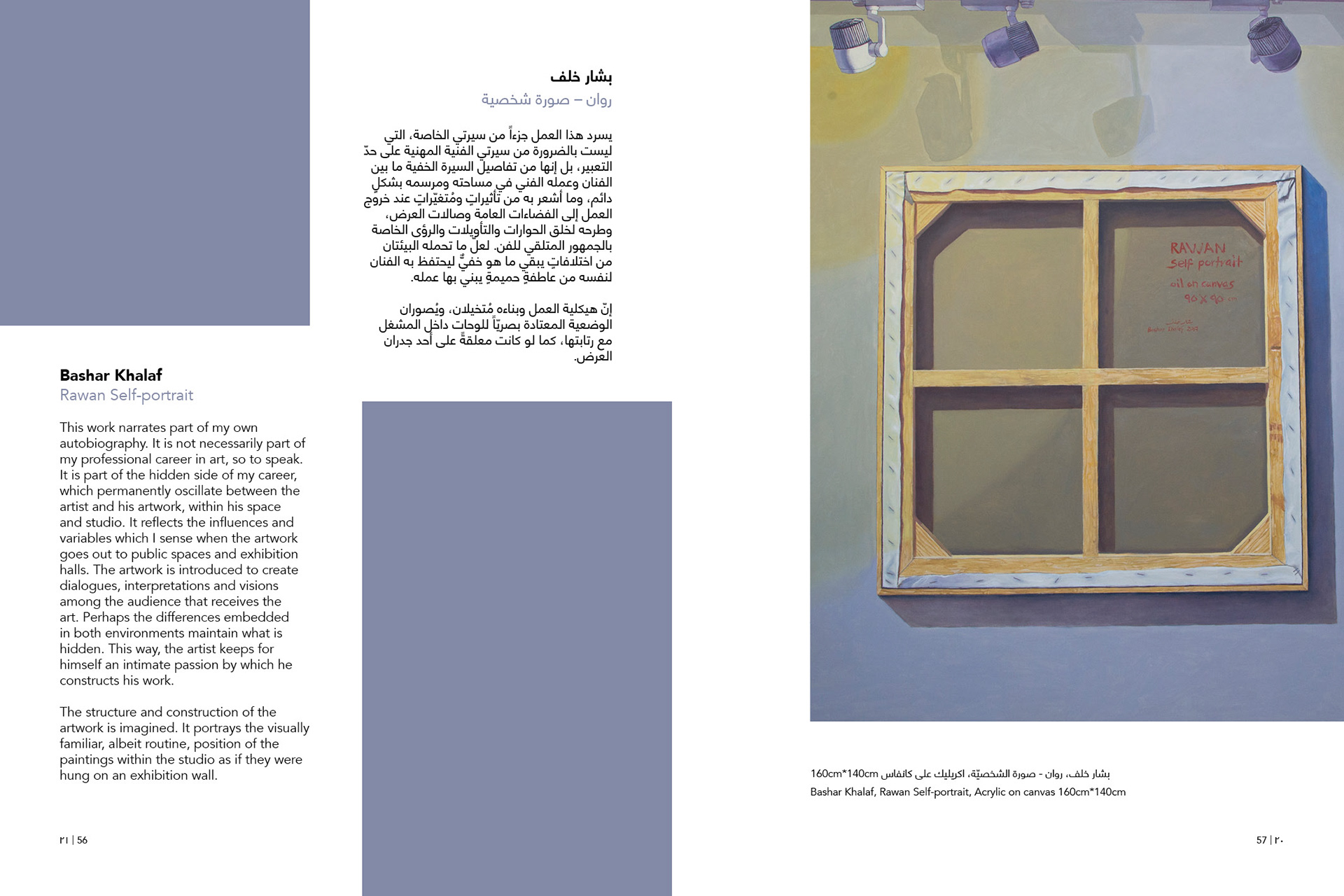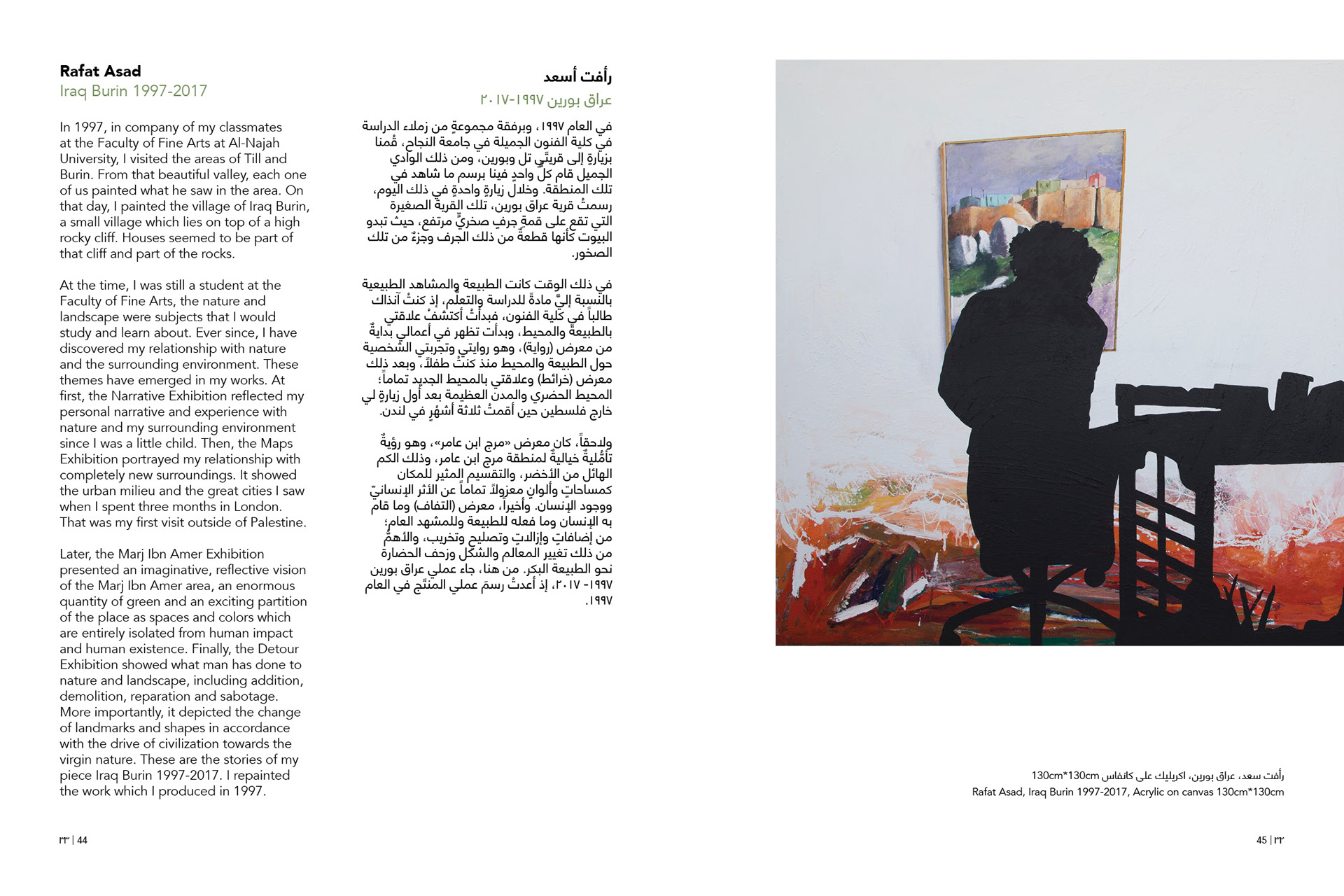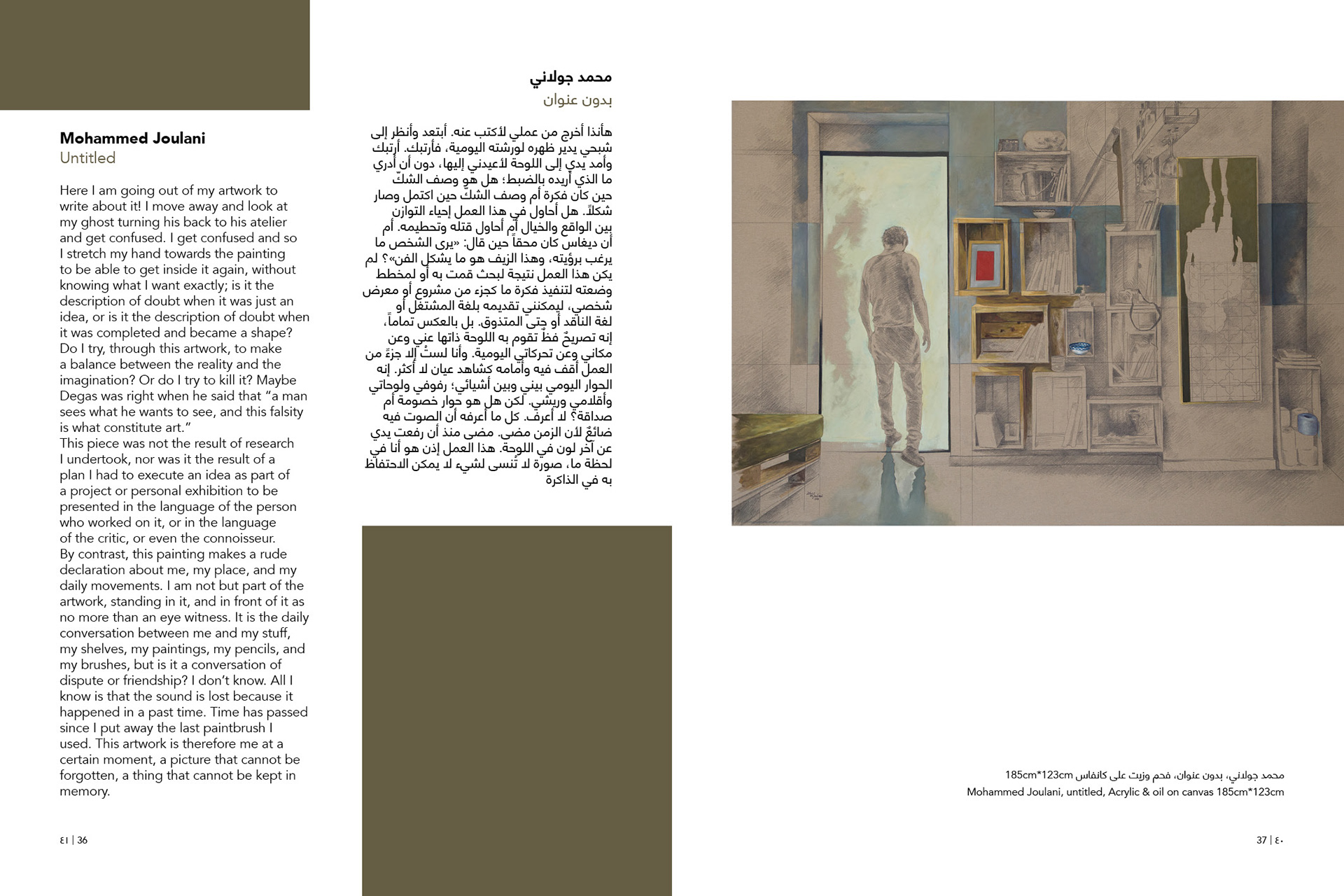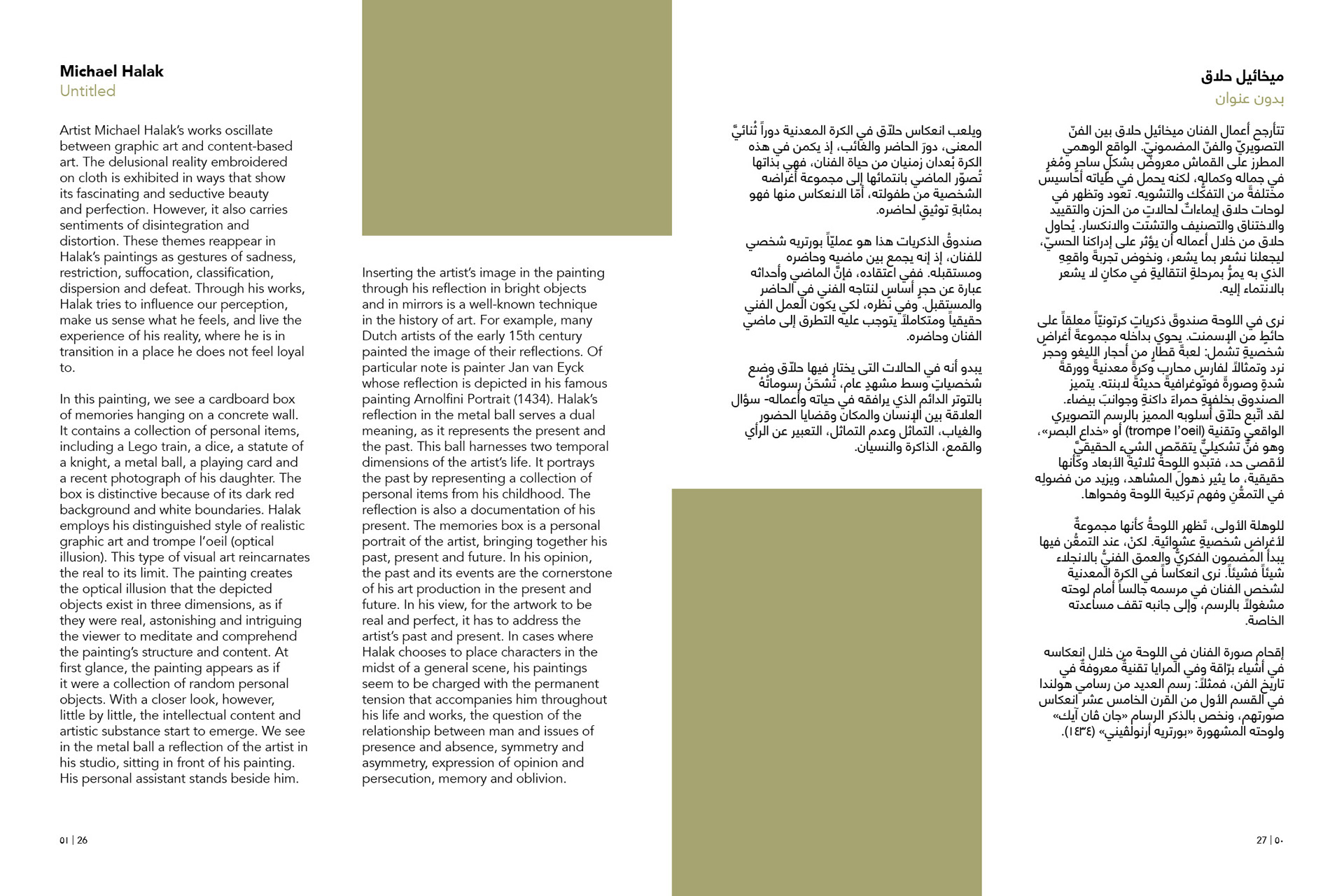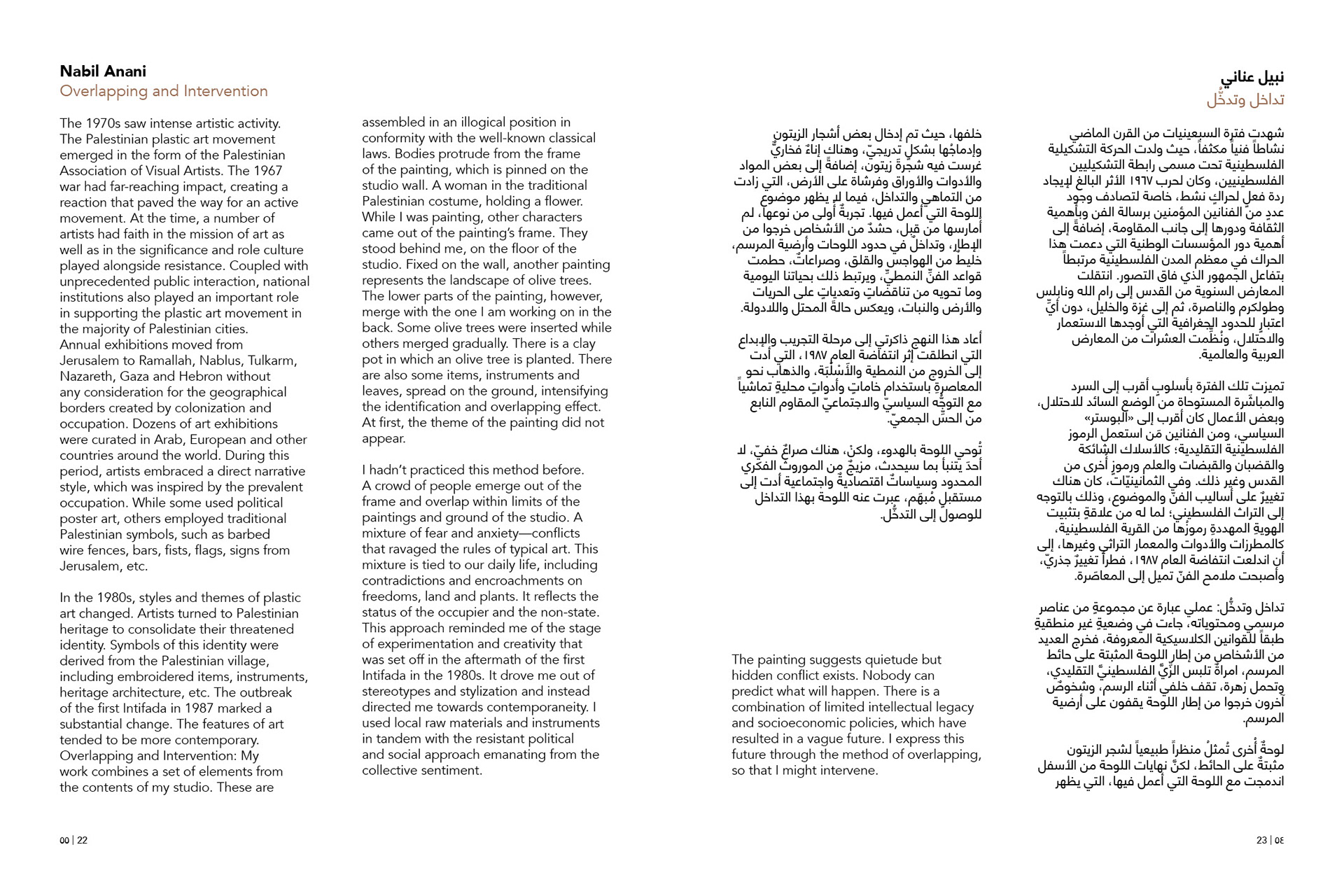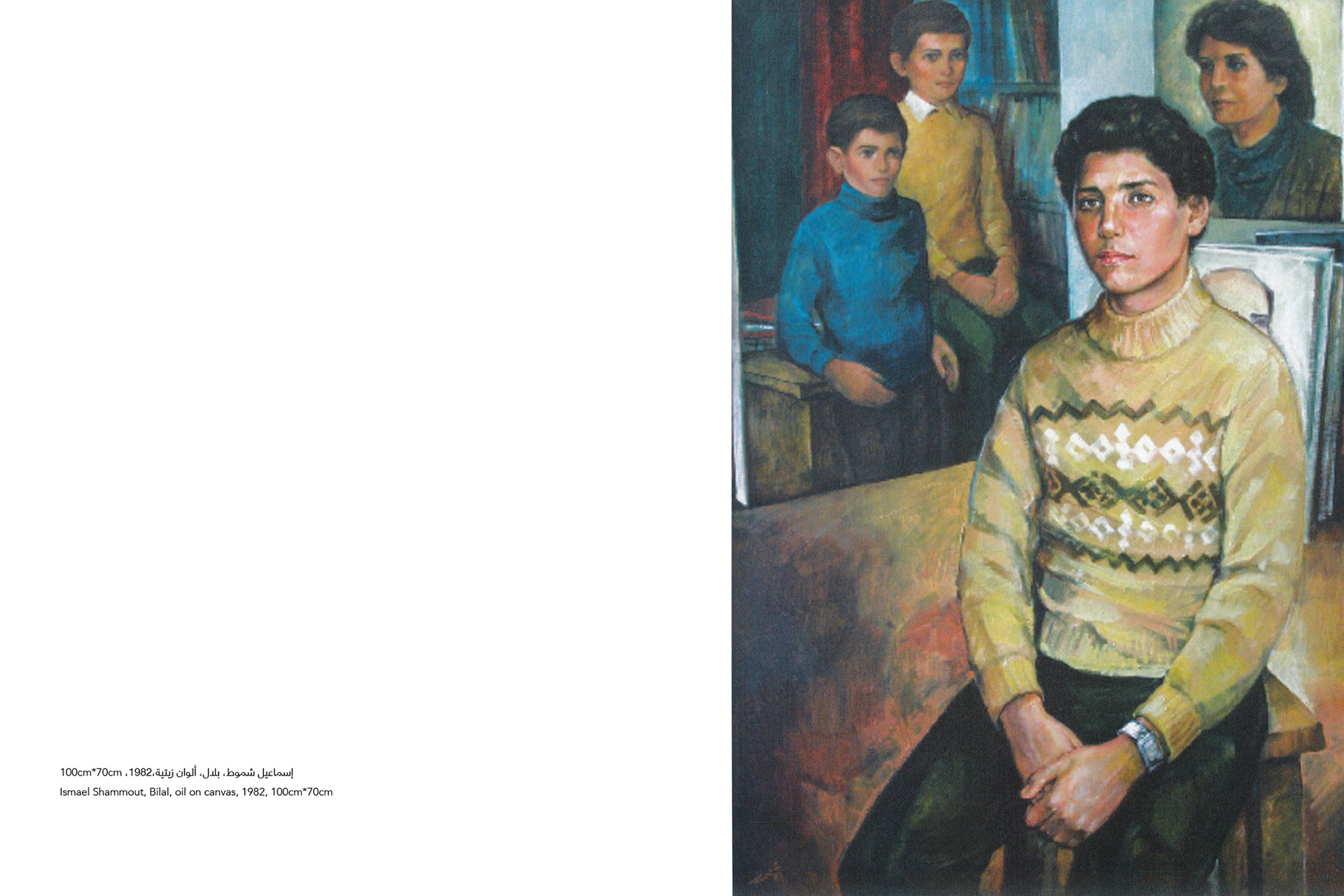The main idea of this exhibition emerges from the autobiographical work of Tamam Al-Akhal and Ismail Shammout, The Heart Paints What the Hand Perceives (2017), published by the Institute for Palestine Studies. This autobiography hides an anachronism of the concept of time, where Tamam El-Akhal reformulates the history and heritage of the departed Ismail Shammout. El-Akhal switches her position from the margin of official knowledge and Palestinian art history to the fore through her narrative, where Shammout’s story constitutes the rear scenery.
Ismail Shammout’s painting, Tamam in Her Red Dress (1964), is considered an example of how the painter’s atelier and previous artwork can be used to create new ones, where relations between the different components of the painting create an anachronism that presents a new perspective on the painting’s meanings imbedded in the new frame. In Memories and Fire (1956), Shammout imagines the refugee in his tent. And in his later work the painting Tamam, became a living part of the atelier and a component adding new meanings to the painting Tamam in Her Red Dress. This connection brings us back to Las Meninas (1656) by the Spanish painter Diego Velázquez, depicting the reflections of the king and queen in a small mirror in the middle of the atelier’s rear wall as they pose for a portrait (the unseen center for the artwork), while the viewer sees the background of the big painting as the painter is in the process of rendering it. The young Infanta Magaret Teresa appears in the painting as the protagonist. Velázquez documents the place and conditions of producing the artwork, in his atelier, so that what appears and does not appear become part of the painting.
“A Sight of Disjunction” aims to give the participating artists the opportunity to reveal unreleased original paintings. This includes the colocation of previous artworks, different visual materials and new work around centralization and disappearance, so that the connection between the place where the work is being produced, the previous artwork, and what does not appear in the painting, become a part of the final product.

